
Ben Hebard Fuller was a major general in the United States Marine Corps and served as the 15th Commandant of the Marine Corps between 1930 and 1934.
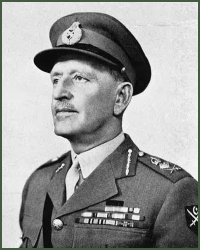
General Sir Douglas David Gracey & Bar was a British Indian Army officer who fought in both the First and Second World Wars. He also fought in French Indochina and was the second Commander-in-Chief of the Pakistan Army. Gracey held this latter office from 11 February 1948 until his retirement on 16 January 1951. Born to English parents living in India, he was educated in English schools before returning to India to serve in the military there.

Walter King Wilson Jr., was an officer of the United States Army with the rank of lieutenant general. He is most noted as a Chief of Engineers during 1961–65. He was the son of Major General Walter K. Wilson Sr.
Lieutenant General Sir Lewis Macclesfield Heath, was an officer in the British Indian Army during the early to mid-twentieth century.

Henry Wolfe Butner was a United States Army general in World War I and onetime commanding officer of Fort Bragg (1928–29). A native of North Carolina, Butner graduated in the top half of the United States Military Academy Class of 1898. He became an artillery officer and was sent to France with the American Expeditionary Force during World War I. In the last month of the war Butner commanded an artillery brigade after promotion to brigadier general. After attending the United States Army War College, he led the United States Army Field Artillery School, the 24th Field Artillery Regiment, Fort Bragg, and Fort Eustis. Promoted to major general in early 1936, Butner took command of the Panama Canal Department. He suffered a stroke while golfing in late 1936, and died at Walter Reed Army Hospital in March 1937.

Lieutenant General Harold Roe "Pink" Bull was a general in the United States Army and served as Assistant Chief of Staff (G-3) at Supreme Headquarters Allied Expeditionary Force (SHAEF) from 1943 to 1945.
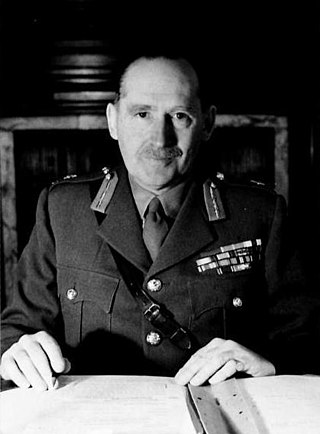
General Sir Daril Gerard Watson was a senior British Army officer who saw service during both World War I and World War II.

The Senior Officers' School was a British military establishment established in 1916 by Brigadier-General R.J. Kentish for the training of Commonwealth senior officers of all services in inter-service cooperation. It was established as part of a wider attempt by the British Army to create a coherent training plan for its officers.
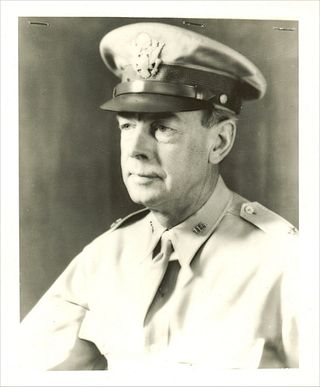
Henry Conger Pratt, professionally known as H. Conger Pratt, was a major general in the United States Army. He was awarded a Distinguished Service Medal with one oak leaf cluster, and received awards from Italy, Brazil, and England. He is the only person in American military history to command both an air force wing and an army division.

Lieutenant General Sir Wilfrid Gordon Lindsell was a senior British Army logistics officer in the Second World War.
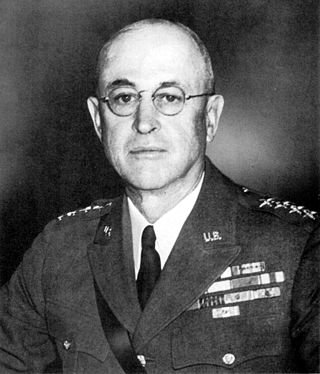
Malin Craig was a general in the United States Army who served as the 14th Chief of Staff of the United States Army from 1935 to 1939. He served in World War I and was recalled to active duty during World War II He played a large role in preparing the U.S. Army for World War II.

General Sir Henry Edward ap Rhys Pryce, KCB, CMG, DSO was a Welsh officer in the Indian Army who served Master-General of the Ordnance in British India.

James Roy Newman Weaver was an American brigadier general and commander of the Provisional Tank Group during the Battle of Bataan.
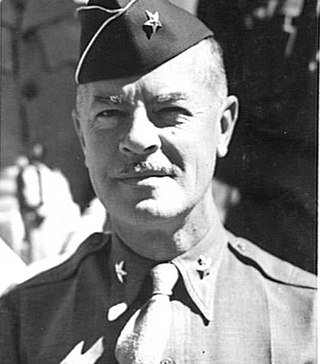
Brigadier General William Francis Heavey was a United States Army officer who commanded the 2nd Engineer Special Brigade in the South West Pacific Area during World War II. A West Point graduate, he entered the army engineers in 1917 and fought in World War I. He continued in the army during the 1920s and 1930s and was quickly promoted to brigadier general in 1942. After the war he became a consulting engineer and managed the Port of Houston.

Frederick Gilbreath was a general officer in the United States Army who commanded the San Francisco Port of Embarkation and the South Pacific Base Command during World War II.

Józef Werobej was a Polish infantry officer who served in the Imperial Russian Army and a colonel in the Polish Army appointed by the Polish authorities in exile as a brigadier general. Knight of the Order of Virtuti Militari.
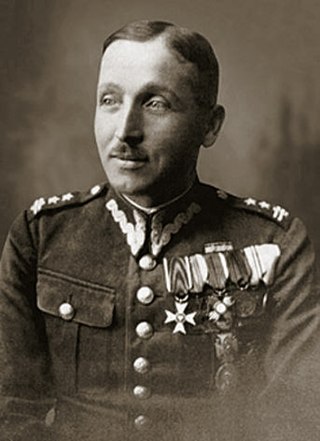
Ludwik Czyżewski was a Polish General during the Invasion of Poland during World War II. He commanded the 2nd Legions' Infantry Regiment during the Battle of Borowa Góra but was defeated in the battle. He was also a member of the Border Protection Corps as well as the Home Army before being posthumously promoted to Brigadier General in 1972 by the President-in-Exile, Stanisław Ostrowski.

Oliver Lyman Spaulding Jr. was a career officer in the United States Army. A veteran of the China Relief Expedition, Philippine–American War, Pancho Villa Expedition, World War I, and World War II, he attained the rank of brigadier general, and was a recipient of the Army Distinguished Service Medal and Legion of Merit from the United States, and the Order of the Black Star (Commander) from France.
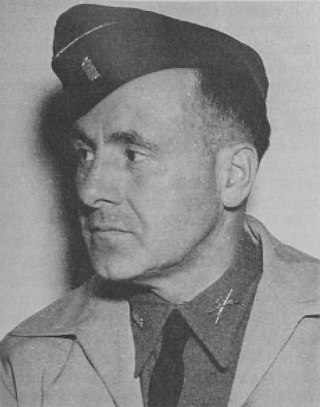
Bradford Grethen Chynoweth was a retired United States Army brigadier general. During World War II, he commanded the 61st Division during the Philippines campaign and then spent more than three years as a prisoner of war after being ordered to surrender in May 1942.

James Albert Woodruff was a military engineer and United States Army major general. During World War I, he supervised the harvesting, milling and shipping of lumber for the allied forces in France. As colonel of the 20th Engineers and Attached Service Troops, he had direct command of over 20,000 officers and men in fourteen battalions harvesting French timber and operating 282 sawmills. A skilled leader and educator, he held many other commands over the course of his 44-year military career.


















